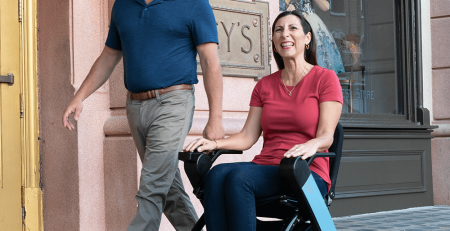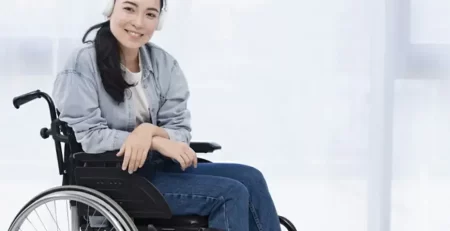- No products in the cart.
06Dec
Pressure Care Cushions and Positioning Aids
Consistent pressure in a particular area in the body causes damage to the skin, and the concealed tissues, resulting in pressure sores. A person lying or sitting in the same position for a long time could get a pressure sore. It could also happen from soreness or movement through a delicate area.
To look after a person with a disability or is at risk of developing pressure sores, it is important to manage the pressure injury carefully. Using suitable pressure care equipment could prevent or reduce pressure sores, along with correct positioning and good personal care.
Usually, a pressure sore happens when the skin presses between two comparable hard surfaces for a long time, like a bed or a bone inside the body. The blood supply to that area is blocked due to this reason and results in damaging the affected tissues.
Often, bony areas of the body such as buttocks, hips, heels and tailbone are bound to get pressure sores, due to lying or seated in the same position. It could also happen on the rear of the head.
Elderly seniors are more likely to get pressure sores as their skin is thin and has lower muscle mass. However, those who are not able to regulate their position could be inclined to get pressure sores.
Changing a patient’s position often can prevent the development of pressure sores. It could be turning the side of the position the person is lying on, raising parts of the body, or propping the patient with the help of cushions.
Avoid lying directly on the hip bone or elbows for too long, as skin in these areas is too sensitive and is liable to get sore.
Skincare is also vital in the prevention of pressure sores. The risk of developing a pressure injury is high when the skin is damp, damaged, or dry. One of the leading issues in pressure management is incontinence and those who are battling with incontinence find it hard to adjust their position independently. Therefore, having a plan to manage incontinence also assists in preventing pressure sores.
This cushion has a cellular design and the soft flexible material used makes the user get maximum pressure redistribution whilst reducing chafing and cutting. It could be adjusted to it the shape of the user, reducing tissue injury and improving blood flow.

It gives maximum pressure redistribution to the user due to its cellular design and soft flexible material while reducing abrasion and snipping.

The dual compartments can be turned separately to improve positioning and strength for either side-to-side to fit pelvic corner or control front-to-back to fit bucket or tilt angle.
To look after a person with a disability or is at risk of developing pressure sores, it is important to manage the pressure injury carefully. Using suitable pressure care equipment could prevent or reduce pressure sores, along with correct positioning and good personal care.
Cause of Pressure Sores
Usually, a pressure sore happens when the skin presses between two comparable hard surfaces for a long time, like a bed or a bone inside the body. The blood supply to that area is blocked due to this reason and results in damaging the affected tissues.
Often, bony areas of the body such as buttocks, hips, heels and tailbone are bound to get pressure sores, due to lying or seated in the same position. It could also happen on the rear of the head.
Elderly seniors are more likely to get pressure sores as their skin is thin and has lower muscle mass. However, those who are not able to regulate their position could be inclined to get pressure sores.
Managing Pressure Care at Home
Changing a patient’s position often can prevent the development of pressure sores. It could be turning the side of the position the person is lying on, raising parts of the body, or propping the patient with the help of cushions.
Avoid lying directly on the hip bone or elbows for too long, as skin in these areas is too sensitive and is liable to get sore.
Skincare is also vital in the prevention of pressure sores. The risk of developing a pressure injury is high when the skin is damp, damaged, or dry. One of the leading issues in pressure management is incontinence and those who are battling with incontinence find it hard to adjust their position independently. Therefore, having a plan to manage incontinence also assists in preventing pressure sores.
ROHO Pressure Cushion–low profile
This cushion has a cellular design and the soft flexible material used makes the user get maximum pressure redistribution whilst reducing chafing and cutting. It could be adjusted to it the shape of the user, reducing tissue injury and improving blood flow.

ROHO Pressure Cushion–High Profile
It gives maximum pressure redistribution to the user due to its cellular design and soft flexible material while reducing abrasion and snipping.

The dual compartments can be turned separately to improve positioning and strength for either side-to-side to fit pelvic corner or control front-to-back to fit bucket or tilt angle.
















Leave a Reply